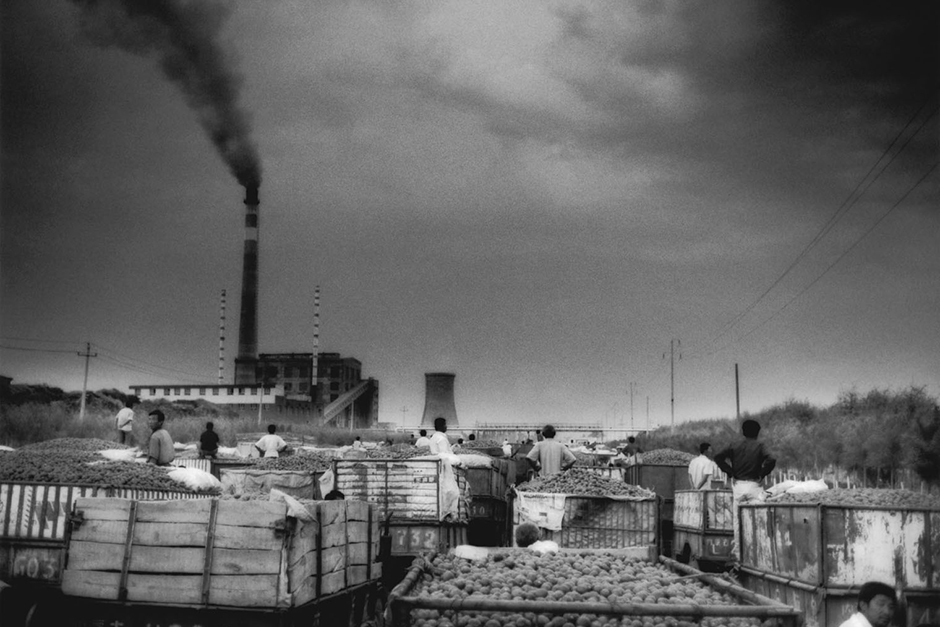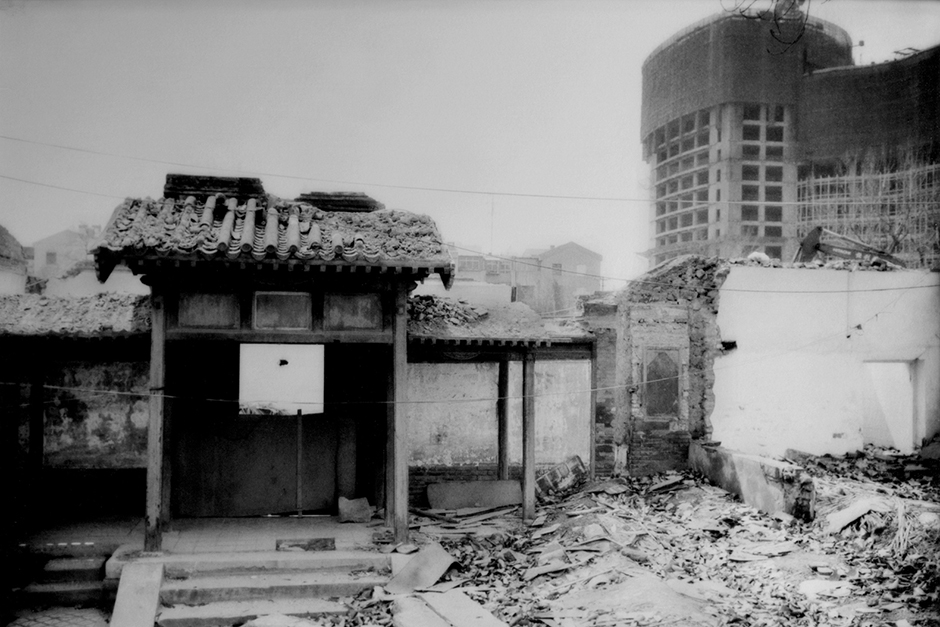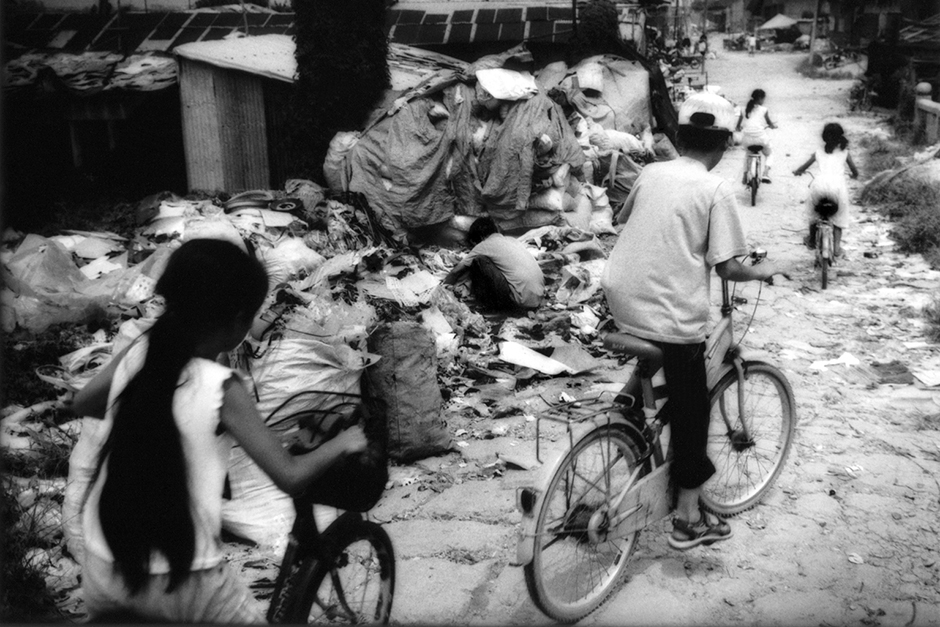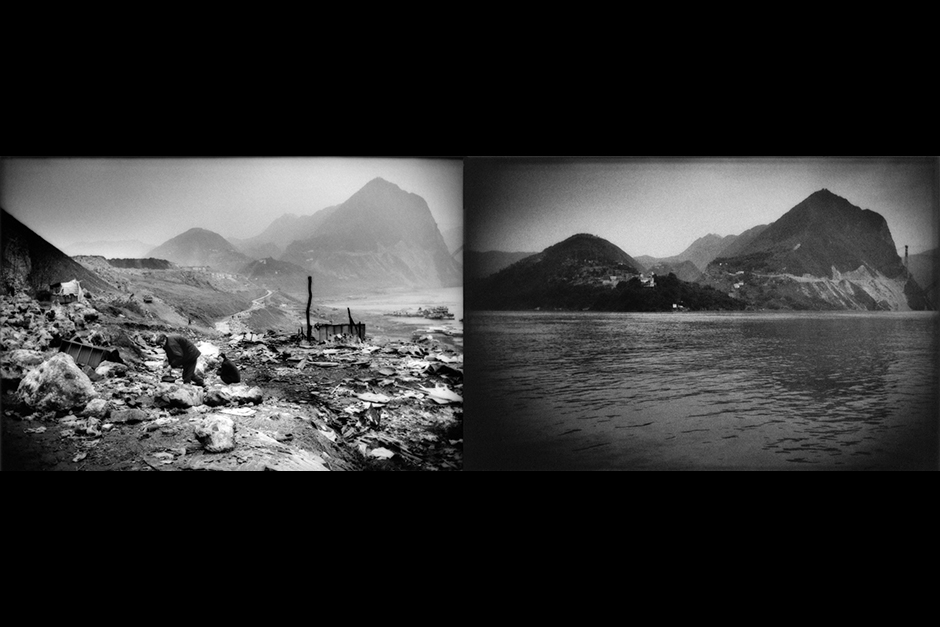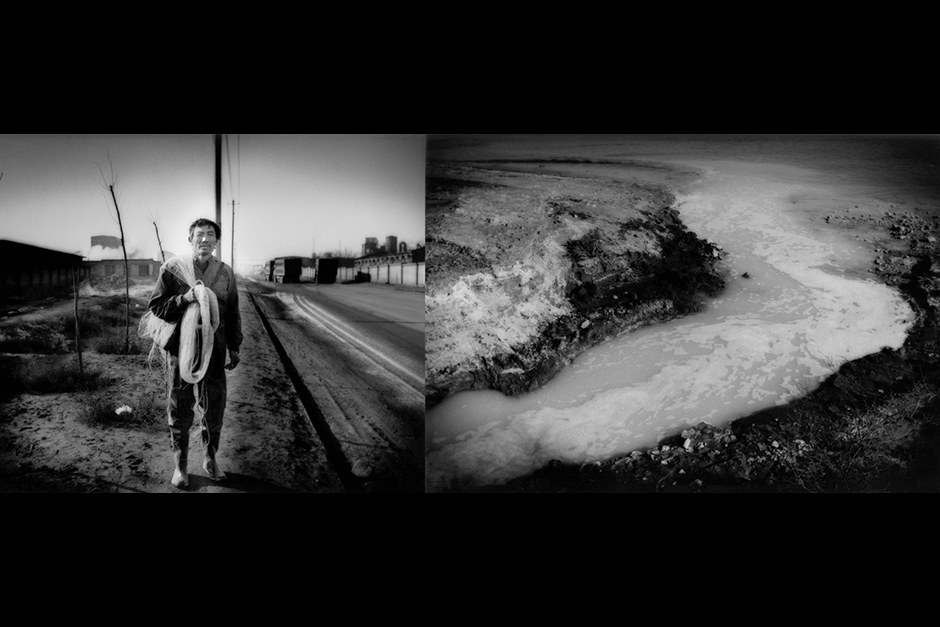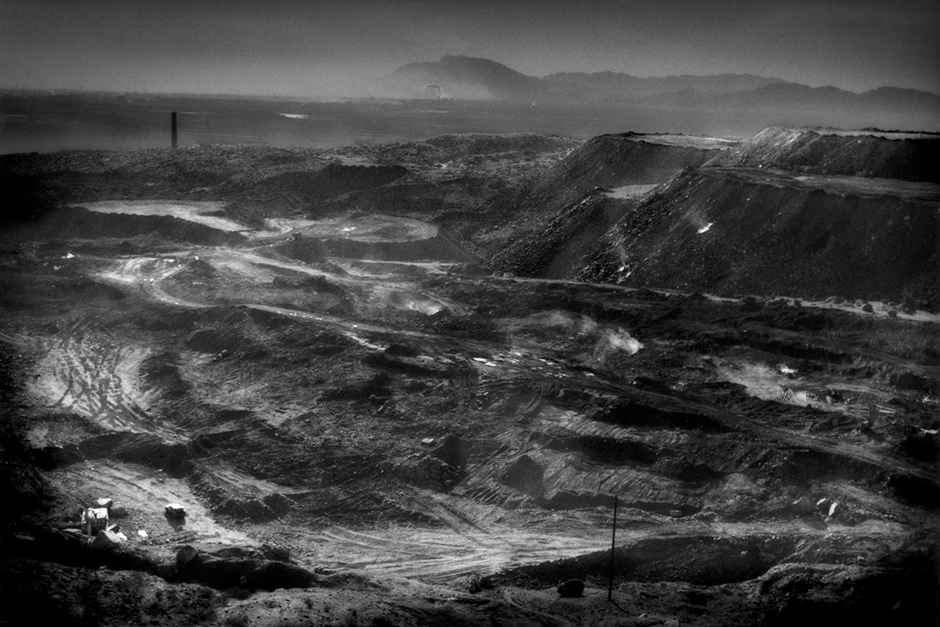The photographer James Whitlow Delano says he finds beauty in melancholy. For more than two decades, he has sought it out around the edges of the often ebullient story of China’s economic rise. His book Empire: Impressions from China, published in 2005, focused on loss of heritage amid China’s dramatic social upheavals and used the techniques of the darkroom to enhance its subjects’ appearance of timelessness, casting them in the somber tones of the 19th-century photographs Delano collects.
The images in his more recent series, Growth, shot mostly over the past half decade, convey a similar mood, but maintain a sharper focus. Delano has now turned his attention to the well-documented—but still hard to comprehend—consequences of China’s economic expansion. As in his past work, his sense of forboding and loss is palpable. Migrant workers asleep on the floor of the Beijing Railway Station appear eerily corpselike. A worn-out fisherman stands beside an image of the polluted river where he makes his living. Newly harvested tomatoes look as if formed from the soot that spews from a nearby smokestack, and the heads of the farmers bringing them to market are burned into the print like holes.
One wonders about the people in the pictures. They look fragile and disoriented amid the engulfing gloom where Delano catches them. Seldom does he show their faces, and when he does, they wear expressions of wariness. Are they distressed to see an American photographer chasing such unlovely scenes? Would they tell a different story, or dispute Delano’s implied message: that they lack power over their surroundings? Or like him, do they too see darkness everywhere they look?
 Photo Gallery James Whitlow Delano
Photo Gallery James Whitlow Delano 




